These shiny Sweet Black Soybeans or Kuromame are an important dish of the Osechi Ryori meal of traditional Japanese New Year foods. Eating these beans symbolizes good health in the new year. They are sweet and slightly savory and can be quite addicting!
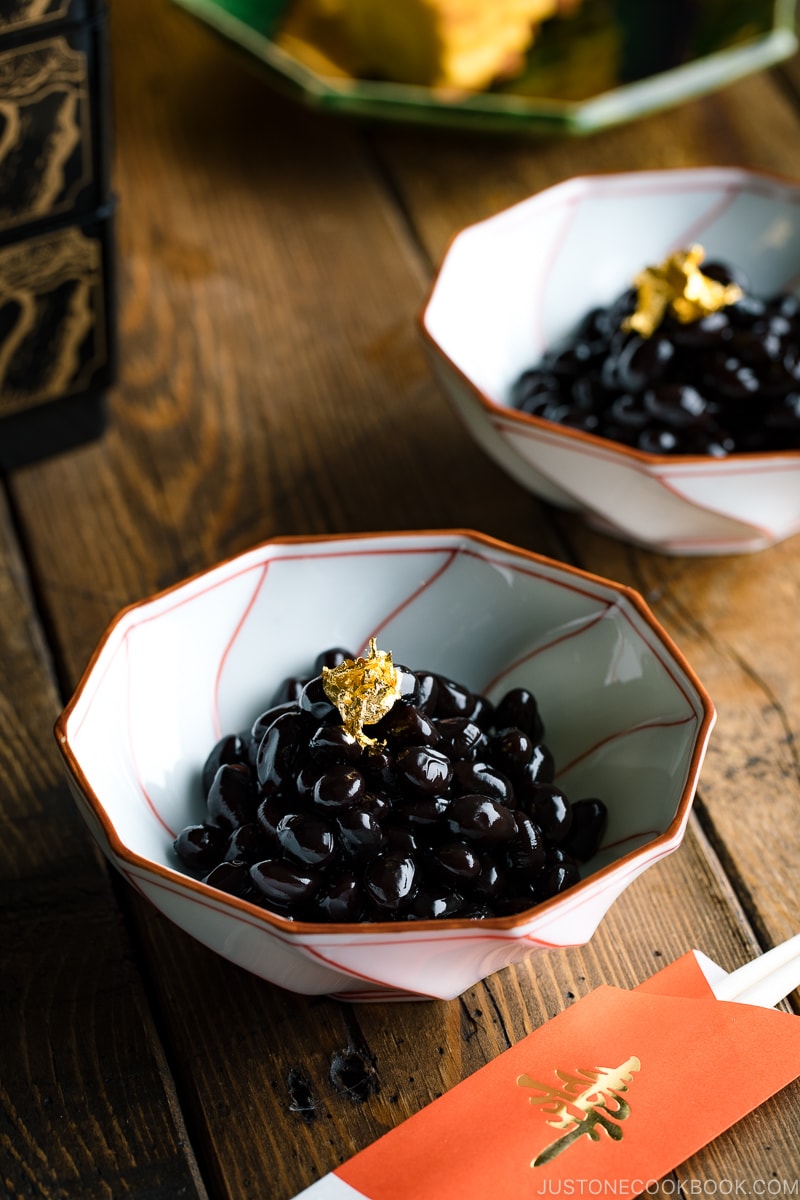
Kuromame (Sweet Black Soybeans) literally “black bean (黒豆)” in Japanese, and it is often served on New Year’s Day as a part of Osechi Ryori (traditional New Year’s meal). The shiny black beans are beautifully contrasting with red lacquer “jubako” (Ojubako) container, which holds all different kinds of colorful traditional meals.
Eating kuromame is considered good for your health for the new year. My parents encouraged me to eat some kuromame on New Year’s Day but this is one of my favorite items among all the New Year’s dishes. Kuromame’s sweet and slightly savory flavor can be quite addicting.
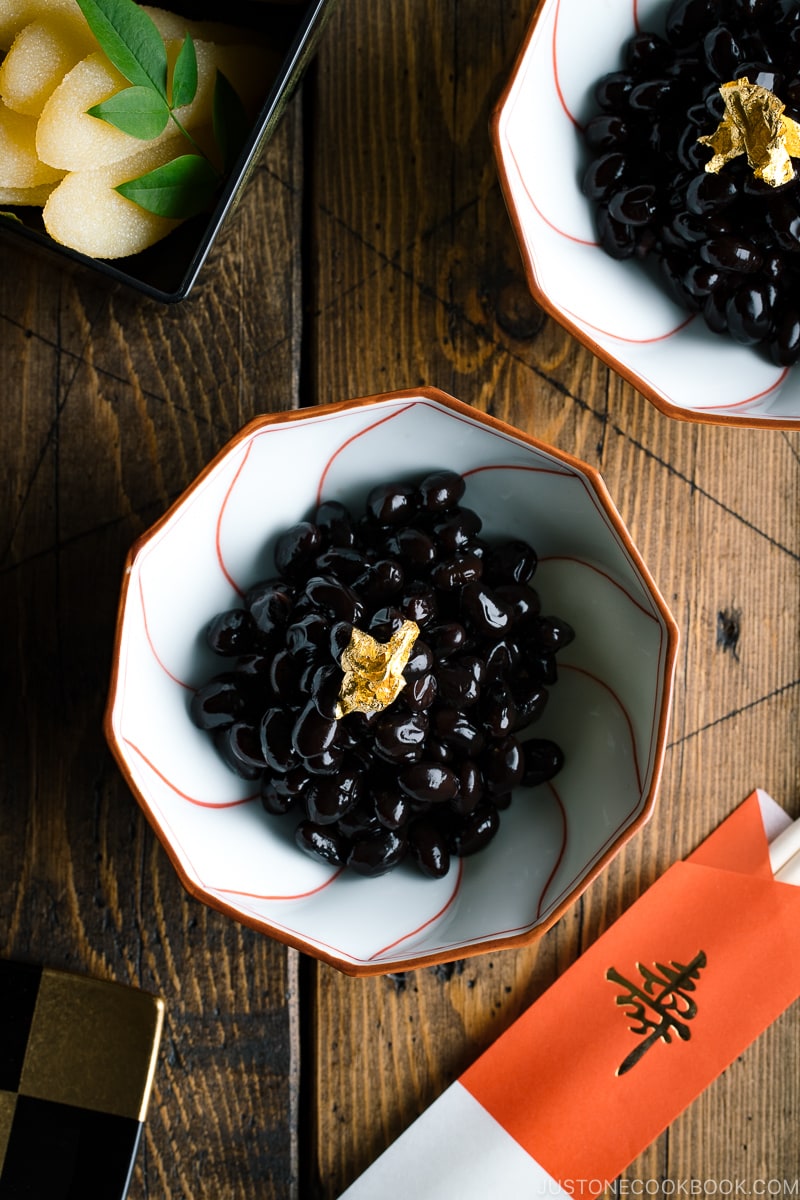
By the way, kuromame is black soybeans and not black beans. The kuromame recipe is pretty simple but the soybeans have to be soaked overnight and simmered on very low heat for a long time, some recipes say to cook on low heat for 8 hours!
I only cook for 4 hours till my black soybeans are tender. I use a heavy-bottomed cast iron pot, which retains heat very well. Please test the doneness of your black soybeans and adjust your cooking time.
If you have an Instant Pot or a pressure cookeryou can speed up the cooking process (15-minute high-pressure cooking!). Check out my Instant Pot Kuromame recipe.
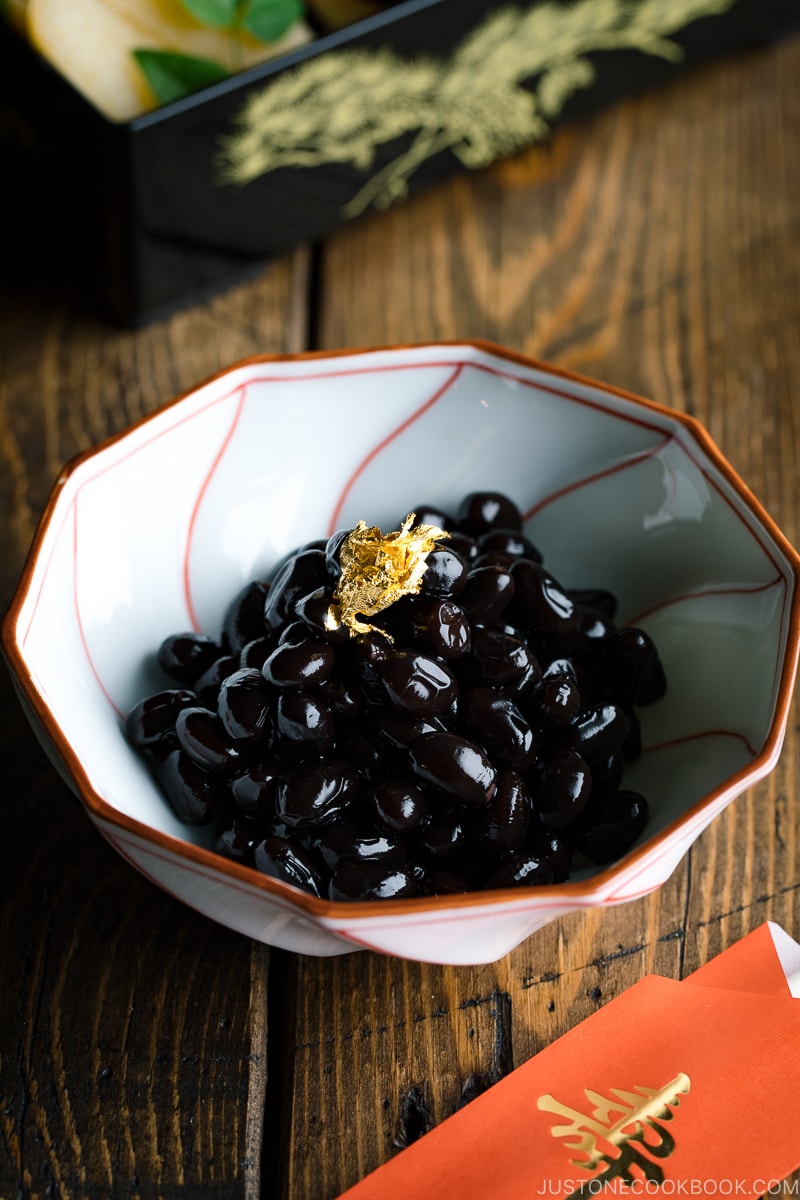
The Trick to Achieve Beautiful Black Color on Beans
Most of the traditional kuromame recipes require 2-3 “rusty” iron nails but it’s hard to find them! So in my recipe, I used Lucky Iron Fish that I purchased on Amazon.
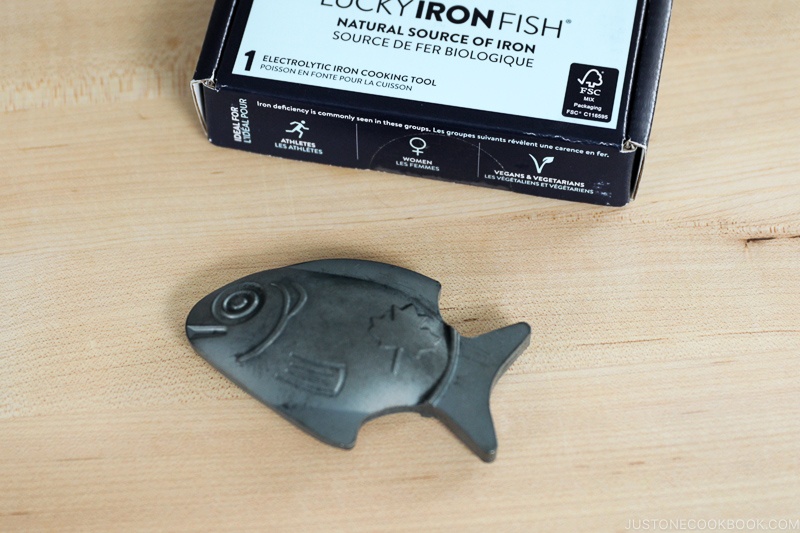
The reason why the Japanese put nails to cook kuromame is that rust (iron oxide) from nails has a chemical reaction with tannin in the beans, which helps the beans turn dark to a rich black color.
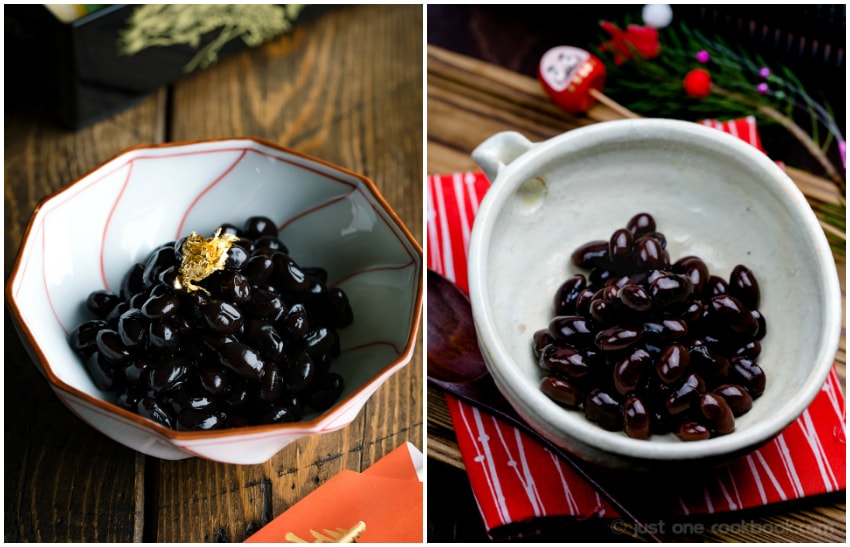
I hope this delicious kuromame will bring you health for the new year.
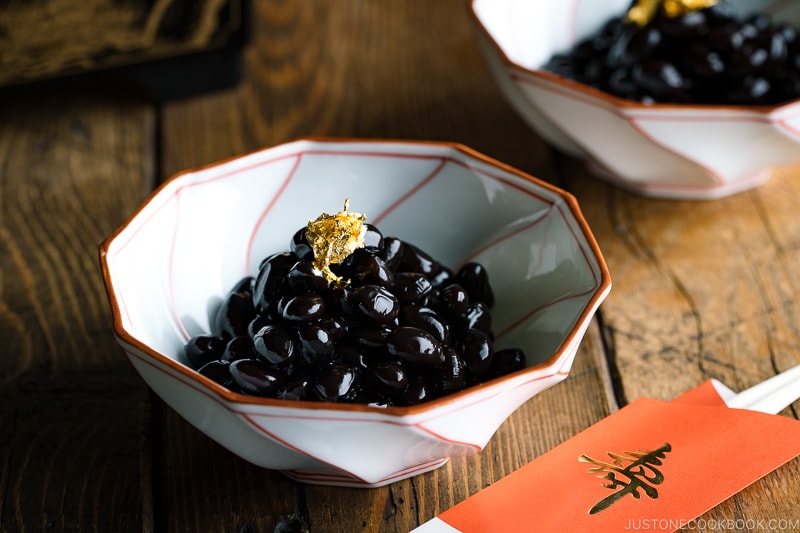
Pressure Cooker Kuromame
If you have an Instant Pot or a pressure cooker, check out my Instant Pot Kuromame recipe.
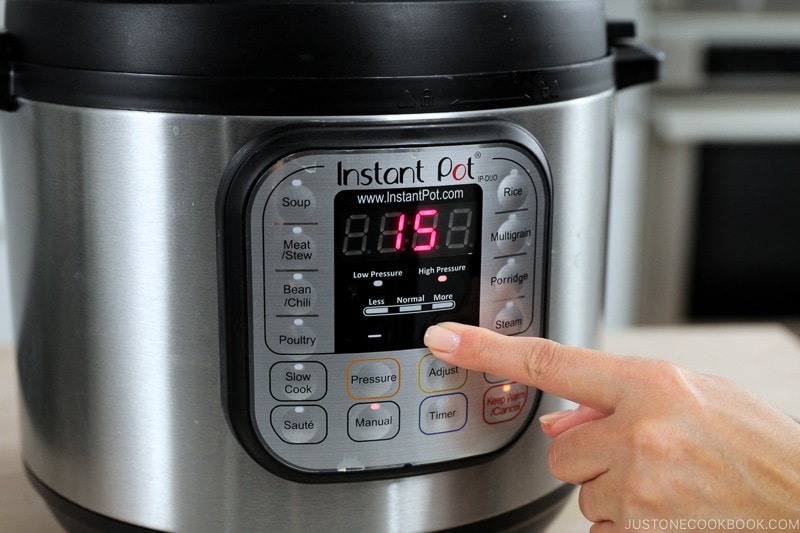
Wish to learn more about Japanese cooking? Sign up for our free newsletter to receive cooking tips & recipe updates! And stay in touch with me on Facebook, Pinterest, YouTubeand Instagram.
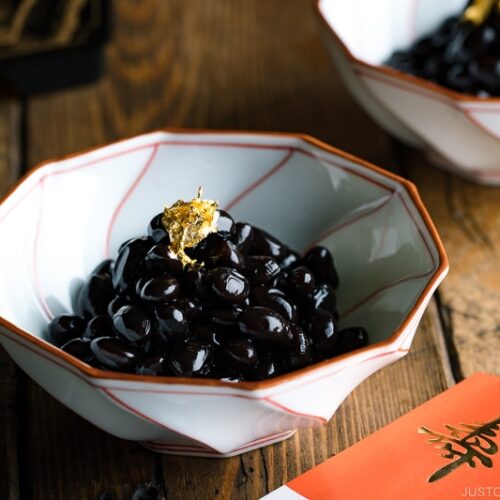
Kuromame (Sweet Black Soybeans)
These shiny Sweet Black Soybeans or Kuromame are an important dish of the Osechi Ryori meal of traditional Japanese New Year foods. Eating these beans symbolizes good health in the new year. They are sweet and slightly savory and can be quite addicting!
Ingredients
Prevent your screen from going dark
Instructions
Before You Start…
-
Please note that this recipe requires a minimum soaking time of 4 hours for the dried beans; I also recommend a resting time of 8 hours once cooked, but this is not required. Please read and follow the package instructions for your black soybeans. My package directions say to soak for 4–5 hours, so I soaked them for 4 hours. For testing purposes, I tried soaking the same brand of soybeans overnight, and they came out a bit too soft. You may need to test to see how long you want to soak your soybeans.
-
I recommend making this recipe 1–3 days before you plan to serve. For more helpful tips on planning your Japanese New Year feast, please read my A 5-Day Osechi Cooking Timeline blog post.
-
Gather all the ingredients. You will need a large pot with a lid (I use a heavy-bottomed cast iron pot) and an otoshibuta (drop lid). If you don’t have one, you can make an otoshibuta with aluminum foil. You will also need either 2–3 rusty iron nails wrapped in cheesecloth (the traditional method) or an Iron Fish (read why in the blog post). You can still make this recipe without the iron oxide from the nails or fish, but your soybeans may not turn a rich black color without it.
To Soak the Soybeans
-
Gently rinse 7 oz black soybeans under cold running water. The skins are fragile, so handle with care. Some beans have skin that is partially peeled off, but you can use those in this recipe. Discard any damaged soybeans and drain well.
-
In a large pot, add the soybeans, 5 cups waterand either the 2–3 cleaned rusty nails wrapped in cheesecloth or the Iron Fish. Depending on your package instructions, soak the soybeans for 4 hours or overnight on the counter in the wintertime (or in the refrigerator in the summertime and in warm climates).
To Cook
-
After soaking, add 1 cup sugar and ½ tsp Diamond Crystal kosher salt to the pot and gently mix. Keep the nails or Iron Fish in the pot.
-
Bring the pot of soybeans to a boil over medium heat.
-
Once boiling, thoroughly skim the white foam off the surface.
-
When you‘re done skimming the foam, place an otoshibuta on the beans and cover the pot with a regular pot lid. The otoshibuta keeps the soybeans submerged under the cooking liquid and helps prevent their skins from getting dried and wrinkled. Next, reduce the heat to low and gently simmer (making sure the beans are not bouncing around) until the soybeans are tender, about 4 hours or longer.
-
Check inside the pot a few times to make sure there is enough cooking liquid to cover the soybeans. If not, add about 1 cup of water. Skim the surface of foam, if needed.
-
Check if the beans are done cooking; they should be tender enough to mash between two fingers. When the beans are tender, remove the rusty nails or Iron Fish.
-
Next, add 1½ Tbsp soy sauce and mix well. Then, remove the pot from the heat and allow to cool.
To Rest (recommended)
-
Once cooled, the Kuromame are ready to eat. Place a piece of parchment paper on the surface of the soybeans to prevent them from getting dried and wrinkled. Once cooled, place the pot with the soybeans and parchment paper cover in the refrigerator for 8 hours or overnight so the soybeans will turn darker and absorb more flavor.
To Serve
-
The following day, remove the pot from the refrigerator and transfer the soybeans and some of their cooking liquid to a storage container. (See my tips below for how to use the leftover cooking liquid.)
-
Serve the Kuromame in a bowl without their cooking liquid. You can serve them either chilled or at room temperature. Garnish on top with edible gold leaf flakes (optional).
To Store
-
Store the Kuromame in an airtight container, with enough cooking liquid to cover them, in the refrigerator for up to 4 days or in the freezer for up to a month.
To Use the Leftover Cooking Liquid and Kuromame
-
You can use the leftover cooking liquid to make Oshiruko (Zenzai)black soybean latte, and jelly (using gelatin, agar, or sides). You can use the leftover Kuromame to make pound cake and Steamed Cake.
Nutrition
Nutrition Facts
Kuromame (Sweet Black Soybeans)
Amount per Serving
% Daily Value*
* Percent Daily Values are based on a 2000 calorie diet.
©JustOneCookbook.com Content and photographs are copyright protected. Sharing of this recipe is both encouraged and appreciated. Copying and/or pasting full recipes to any website or social media is strictly prohibited. Please view my photo use policy here.
Editor’s Note: This post was originally published on December 27, 2012. New images have been added to the post in December 2019. The post was republished on December 28, 2023.


